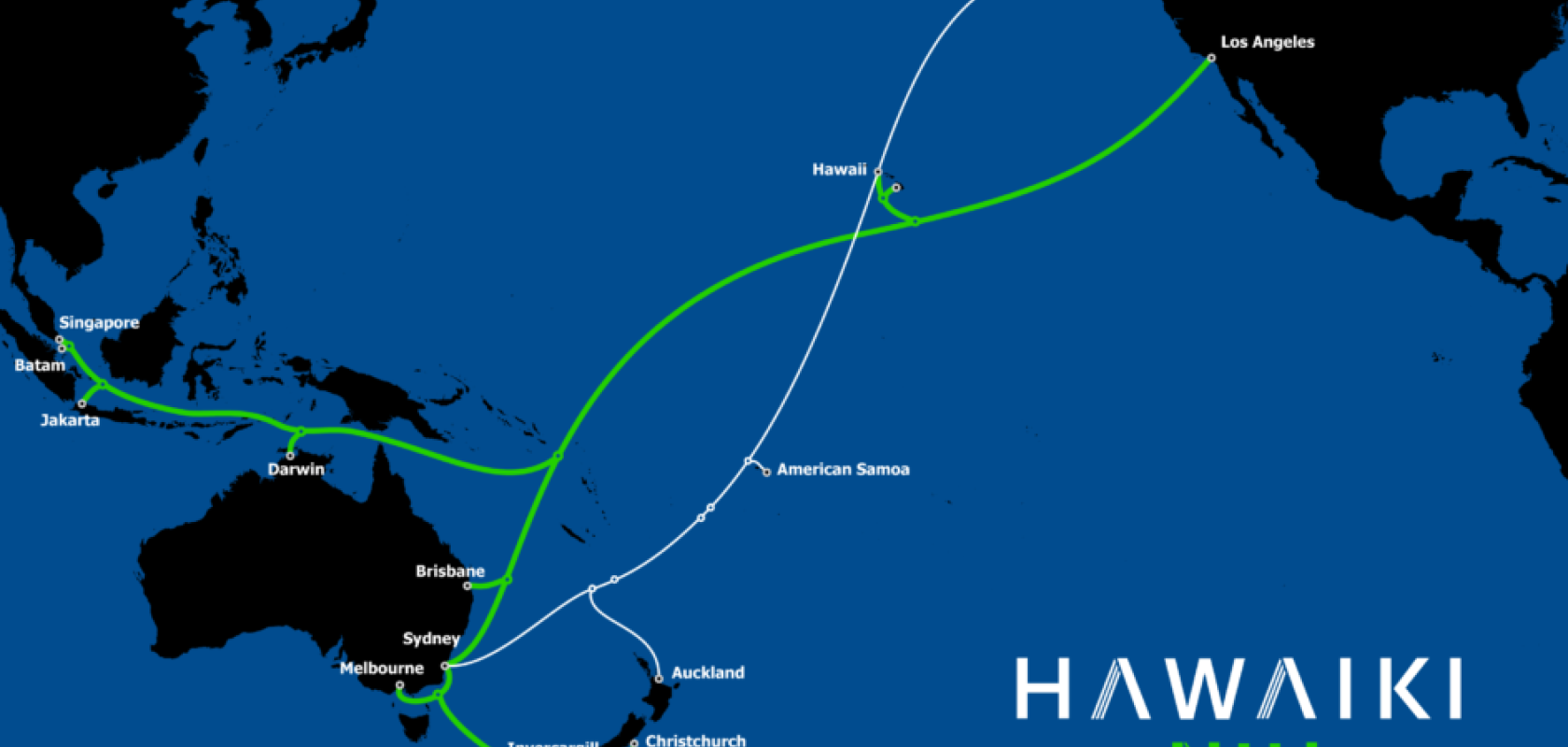Hawaiki is launching a new spatial division multiplexing (SDM) subsea cable linking South-East Asia, Australasia and North America.
Construction of the estimated 22,000km Hawaiki Nui system is due to start next year, and is expected to be ready for service in 2025.
Hawaiki Nui (which means ‘The Great Hawaiki’ in Polynesian) will have a design capacity of 240Tb/s and provide end-to-end connectivity between the three main hubs of the Pacific region: Singapore, Sydney and Los Angeles. Landings are planned in Jakarta and Batam. In Australia, it will serve international and domestic capacity requirements, linking Sydney, Melbourne, Brisbane and Darwin, while providing direct access to Singapore and Los Angeles.
The cable will also land in the South Island of New Zealand, linking Christchurch, Dunedin and Invercargill directly to Australia, and two branches will be built to connect Oahu and Big Island in Hawaii.
The company has selected operator PT Mora Telematika Indonesia (Moratelindo) as its strategic partner for Indonesia. Moratelindo will act as the Indonesian landing party and acquire all corresponding permits and authorisations in Indonesia for the Hawaiki Nui project. It will also play a key role in the system design and deployment.
Remi Galasso, founder and executive chairman of Hawaiki said: ‘Coupled with the existing Hawaiki cable, Hawaiki Nui will significantly expand our subsea network and offer unparalleled connectivity and redundancy to customers operating in the Asia-Pacific region.
An all-in-one submarine cable infrastructure with multiple international and domestic routes embedded in the same system, Hawaiki Nui has been designed to deliver direct connectivity through new subsea paths and provide optimal diversity.’
Galumbang Menak, president director of Moratelindo, added: ‘We are pleased to cooperate with Hawaiki and participate in the development of the Hawaiki Nui cable project. This new submarine cable system will provide an alternative low latency route for international connectivity to and from Indonesia, and reduce the country’s dependence on existing connections going through Singapore.’


